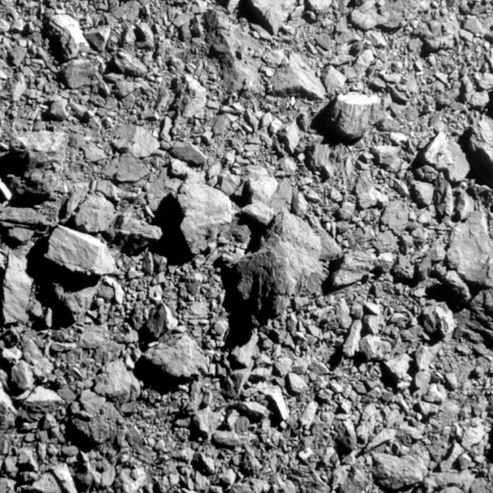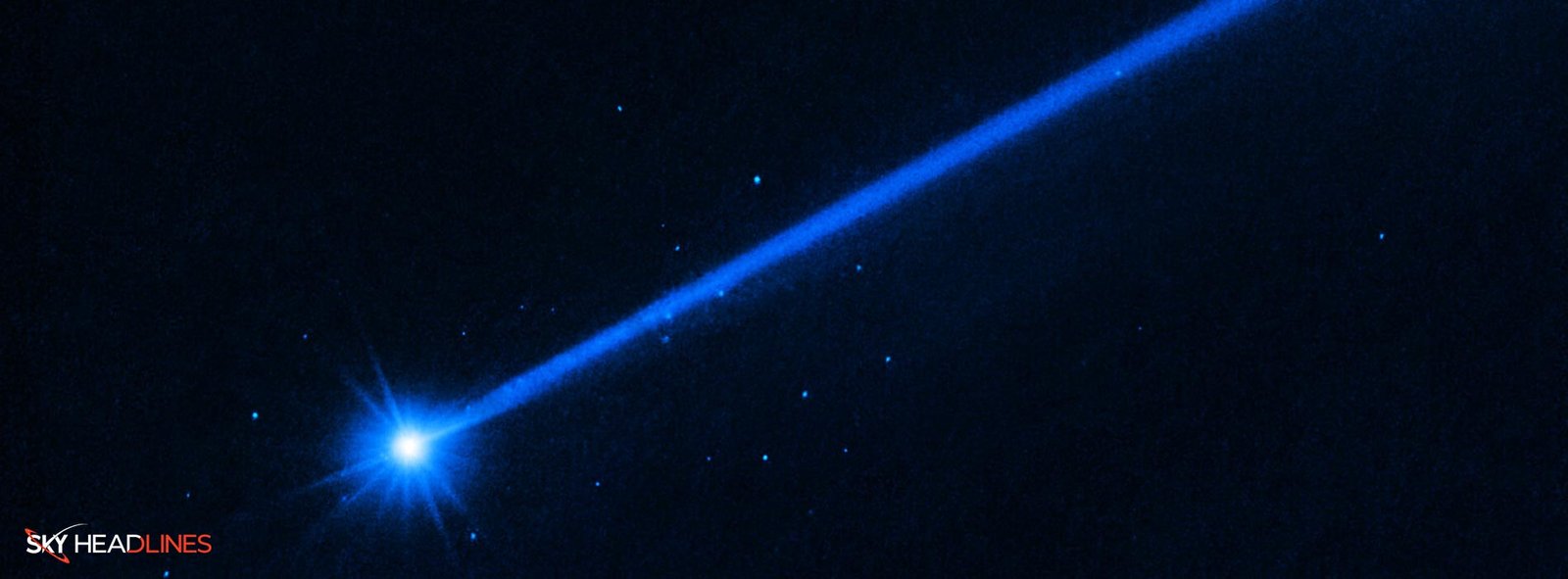Hubble saw escaping of boulders from Asteroid Dimorphos. If you are interested in knowing about its discovery, then this blog is for you.
Hubble Telescope Discovers Asteroid Dimorphos’ Post-DART Impact Drama
“Shake, Rattle, and Roll,” a popular rock song from 1954, could be the theme music for the discovery made by the Hubble Space Telescope about what is happening to the asteroid Dimorphos after NASA’s DART (Double Asteroid Redirection Test) experiment. On September 26, 2022, DART hit Dimorphos on purpose, which slightly changed its path around the bigger asteroid Didymos.
Astronomers have found a group of boulders that may have been shaken off the asteroid Dimorphos when NASA slammed the half-ton DART impactor spaceship into Dimorphos at about 14,000 miles per hour. Hubble’s sensitivity made this possible.
Asteroid Dimorphos Unveils Boulders Ejected Post-DART Impact
Hubble photometry shows that the 37 loose rocks range in size from 3 feet to 22 feet across. They are moving away from the asteroid at a little more than a half-mile per hour, which is about as fast as a big tortoise can walk. About 0.1% of the mass of Dimorphos can be found in these rocks.
David Jewitt of the University of California at Los Angeles, a planetary scientist who has been using Hubble to track changes in the asteroid during and after the DART impact, said:
“This is a spectacular observation – much better than I expected. We see a cloud of boulders carrying mass and energy away from the impact target. The numbers, sizes, and shapes of the boulders are consistent with them having been knocked off the surface of Dimorphos by the impact,”
“This tells us for the first time what happens when you hit an asteroid and see material coming out up to the largest sizes. The boulders are some of the faintest things ever imaged inside our solar system.”
Hubble Unveils New Dimension: Hera Spacecraft to Study DART Experiment’s Aftermath
Jewitt says that this opens up a new dimension for studying the aftermath of the DART experiment using the European Space Agency’s upcoming Hera spacecraft, which will arrive at the binary asteroid in late 2026. Hera will perform a detailed post-impact survey of the targeted asteroid.
Jewitt said:
“The boulder cloud from Asteroid Dimorphos will still be dispersing when Hera arrives. It’s like a very slowly expanding swarm of bees that eventually will spread along the binary pair’s orbit around the Sun.”
Most likely, the boulders are not parts of the small asteroid that broke up when it hit. They were already spread out across the surface of the asteroid, as seen in the last close-up picture taken by the DART spacecraft just two seconds before the crash when it was only seven miles above the surface.
Hubble Observations Shed Light on DART Impact: Estimated Crater Size and Dimorphos’ Formation
Jewitt estimates that the impact shook off two percent of the boulders on the asteroid’s surface. He says the boulder observations by Hubble also give an estimate for the size of the DART impact crater.

He said:
“The boulders could have been excavated from a circle of about 160 feet across (the width of a football field) on the surface of Dimorphos,”. Hera will eventually determine the actual crater size.
Long ago, Dimorphos may have formed from pieces of rock that the bigger asteroid Dimorpho shrew out into space. The parent body may have spun up too quickly, or it may have lost some of its mass after a near-miss with another object. The material that was thrown out made a ring that was pulled together by gravity to make Dimorphos. This would make it a flying pile of rocks and rock pieces that are only loosely held together by gravity. So, it’s likely that the inside isn’t solid but has more of a structure like a bunch of grapes.
Mystery of Ejected Rocks from Asteroid Dimorphos Hubble Observations Offer Clues
It’s not clear how the rocks got off the surface of the asteroid dimorphos. They might be part of an ejecta plume that Hubble and other telescopes saw and took pictures of. Or, the impact could have sent an earthquake wave through the asteroid, like hitting a bell with a hammer, shaking the surface debris loose.
“If we follow the boulders in future Hubble observations, then we may have enough data to pin down the boulders’ precise trajectories. And then we’ll see in which directions they were launched from the surface,” said Jewitt.
The DART and LICIACube (Light Italian CubeSat for Imaging of Asteroids) teams have also been looking at rocks found in pictures taken by the LICIACube LUKE (LICIACube Unit Key Explorer) camera in the minutes after DART’s impact.
The Hubble Space Telescope is a project that NASA and ESA worked on together. The telescope is run by NASA’s Goddard Space Flight Center in Greenbelt, Maryland. The Hubble and Webb science operations are run by the Space Telescope Science Institute (STScI) in Baltimore, Maryland. The Association of Universities for Research in Astronomy, which is based in Washington, D.C., runs STScI for NASA.





